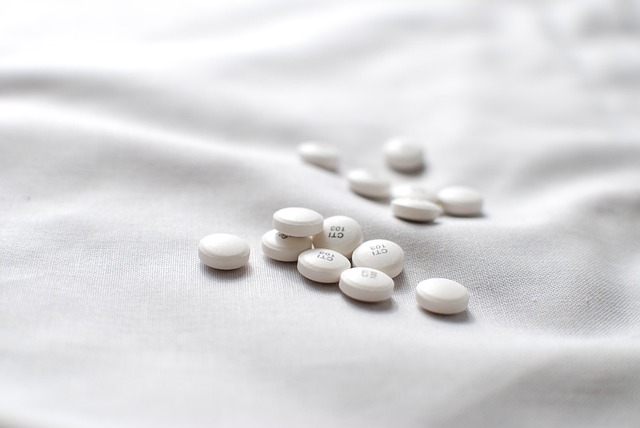Medication Factors That Can Influence Skin Bleeding and Marks
Medications can change the way small blood vessels and clotting mechanisms respond to everyday bumps, making bruises appear larger, last longer, or feel more painful. Understanding which drugs affect skin bleeding and marks helps people and clinicians manage visible contusions and hematoma risk while supporting safer healing and prevention strategies.

Medications can alter clotting, vessel integrity, and inflammatory responses in ways that affect how bruises form and resolve. Many people notice larger or longer-lasting discoloration after minor impacts; these changes often trace back to drugs that reduce platelet function, thin the blood, or interfere with repair processes. Recognizing these medication factors is important for people observing unexpected bruising, for clinicians assessing injury severity, and for planning safe treatment that minimizes swelling, pain, and reduced mobility.
How do medications affect bruising and contusion?
Certain medications interfere with normal clot formation or damage capillary walls, making bruising and contusion more likely after minor trauma. Antiplatelet agents and anticoagulants reduce the blood’s ability to stop bleeding, so even small vessel leaks can lead to a visible bruise. Other drugs, such as some corticosteroids, can thin skin and weaken connective tissue, increasing susceptibility to direct vessel rupture during impacts. When assessing a new contusion, clinicians consider recent changes in medication as a possible contributor to the extent of visible skin marks.
Which drugs raise risk of hematoma and swelling?
Hematoma formation occurs when bleeding collects beneath the skin or in deeper tissues; anticoagulants and strong antiplatelet agents are common contributors. These drugs may allow ongoing bleeding at the injury site, enlarging a hematoma and causing more pronounced swelling. Some medications that cause fluid retention or alter inflammatory responses can worsen swelling around the injured area. Monitoring size, firmness, and worsening pain can help indicate whether a hematoma is expanding and requires medical review.
How do medications influence discoloration and healing?
Drug effects on inflammation and tissue repair can change the typical color progression of a bruise and slow healing. Anticoagulant-related bruises may take longer to reabsorb, prolonging discoloration phases from red to blue, green, and yellow. Medications that suppress tissue regeneration or collagen synthesis, including long-term corticosteroids, may delay the clearing of discoloration and increase the risk of skin fragility. Supporting healing involves controlling underlying factors, optimizing nutrition, and, when appropriate, adjusting medication under clinical guidance.
What treatments help: compression, ice, and warmth?
First-line measures for medication-influenced bruising mirror general bruise care but may need adaptation. Immediate application of ice (wrapped, 10–20 minutes) can reduce bleeding and swelling by constricting vessels. Gentle compression can limit hematoma expansion but should be used cautiously if circulation or sensation is impaired. After 48–72 hours, warmth can promote circulation and clearance of blood breakdown products, accelerating discoloration fade. Always consider medication-related bleeding risk before applying firm compression or aggressive therapies and consult a clinician when unsure.
How is pain and mobility affected by medication-related bruises?
Pain intensity and mobility restriction depend on bruise size, location, and underlying hematoma. When medications prolong bleeding, tissue pressure from a growing hematoma can increase pain and reduce range of motion, particularly around joints. Analgesic choices should account for interactions with existing drugs; for example, some nonsteroidal anti-inflammatory drugs (NSAIDs) further affect platelet function and may worsen bleeding. Clinicians balance pain control with bleeding risk to preserve safe mobility and function.
What prevention strategies exist for medication-related bruising?
Prevention focuses on risk assessment and practical steps. Patients on blood-thinning or connective-tissue–affecting medications can reduce accident risk by improving home safety, using protective clothing during activities, and avoiding unnecessary falls. Regular medication reviews with a healthcare professional can identify opportunities to adjust doses, change agents, or add protective measures when bruising becomes frequent. Nutritional support, gentle strength and balance exercises to reduce falls, and clear guidance on when to seek care help minimize both bruising and its complications.
This article is for informational purposes only and should not be considered medical advice. Please consult a qualified healthcare professional for personalized guidance and treatment.
Conclusion Medication-related changes to clotting, vessel integrity, inflammation, and tissue repair can meaningfully influence bruising, contusion size, hematoma risk, swelling, discoloration, pain, and mobility. Awareness of which drugs contribute to these effects supports better symptom management and prevention. When bruising is disproportionate, increasing, or accompanied by significant pain or functional loss, clinical evaluation is warranted to assess medication role and appropriate adjustments.




